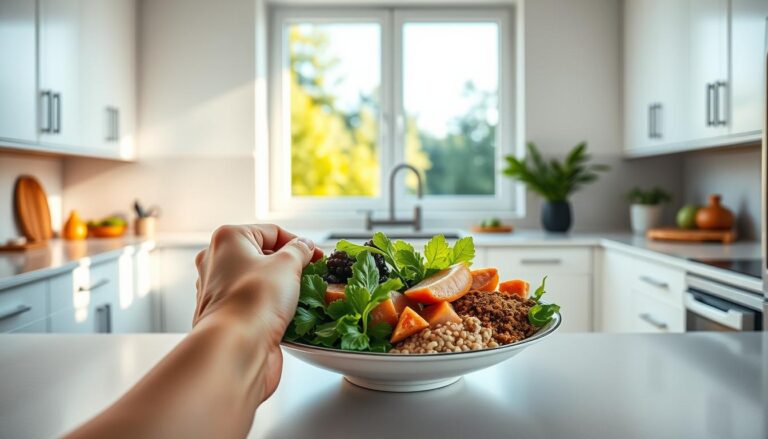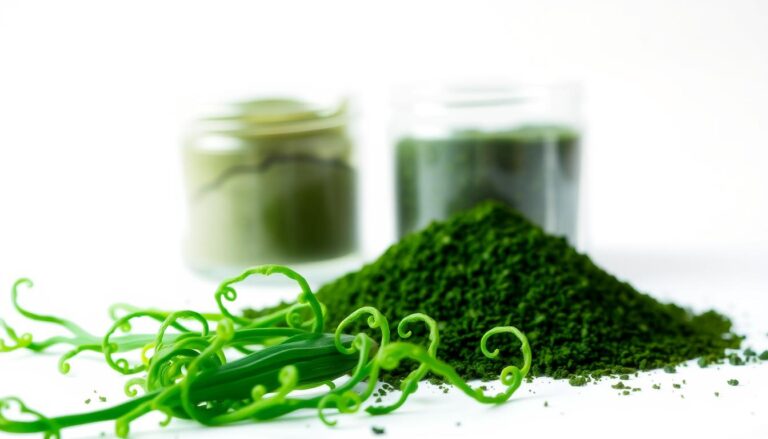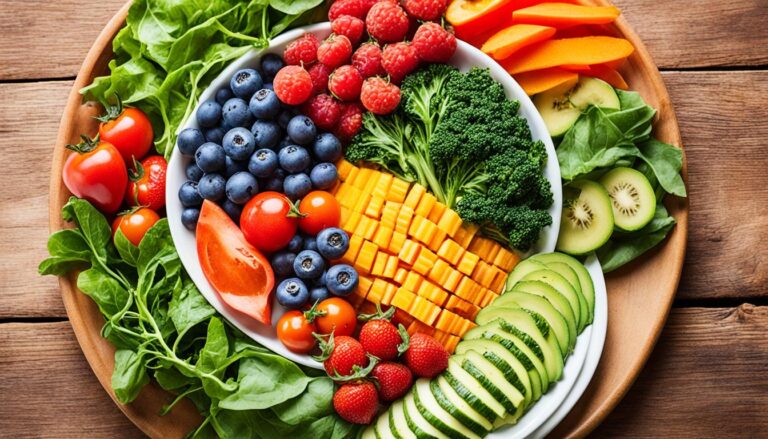Did you know rice feeds over half the world’s population daily? This ancient grain has been cultivated for more than 8,000 years, offering essential nutrition and energy. Packed with vitamins and minerals, it remains a cornerstone of global diets.
From Asia to the Americas, rice adapts seamlessly to diverse cuisines. It provides nearly 50% of daily calories for billions, making it a vital food source. Beyond basic sustenance, modern varieties like black and red rice introduce unique health benefits.
Rich in carbohydrates yet low in fat, rice fuels active lifestyles. Its versatility in meals—from sushi to risotto—showcases its cultural significance. Whether for energy or tradition, this staple continues to nourish generations.
Key Takeaways
- Rice is a dietary staple for over half the global population.
- It delivers essential carbohydrates, vitamins, and minerals.
- Specialty varieties like black rice offer added nutrients.
- Adaptable across cuisines, from savory dishes to desserts.
- Supports energy needs with low-fat, easily digestible calories.
Introduction to Rice as a Global Staple
Few foods rival rice in cultural and dietary significance worldwide. This resilient grain thrives in diverse climates, from flooded paddies to arid uplands. Over 100,000 varieties exist, each adapted to local growing conditions.

In many developing nations, rice is synonymous with survival. “To eat” often means “to eat rice,” reflecting its economic and nutritional centrality. Brazil exemplifies innovation, pairing rice with beans to create a complete protein source.
“Nearly half of people worldwide derive 50% of daily calories from rice.”
Consumption patterns vary sharply between regions:
| Region | Annual Per Capita Consumption | Primary Dishes |
|---|---|---|
| Asia | 90-100 kg | Steamed rice, sushi, biryani |
| United States | 12-15 kg | Pilafs, rice bowls, desserts |
Rice also anchors food security programs. Its short growth cycle and high yield help alleviate poverty in vulnerable communities. As the world’s third-largest cereal crop, it remains indispensable for billions.
What Are the Benefits of Rice?
Beyond sustenance, rice offers measurable advantages for energy and wellness. Its balanced profile supports active lifestyles while delivering critical micronutrients.
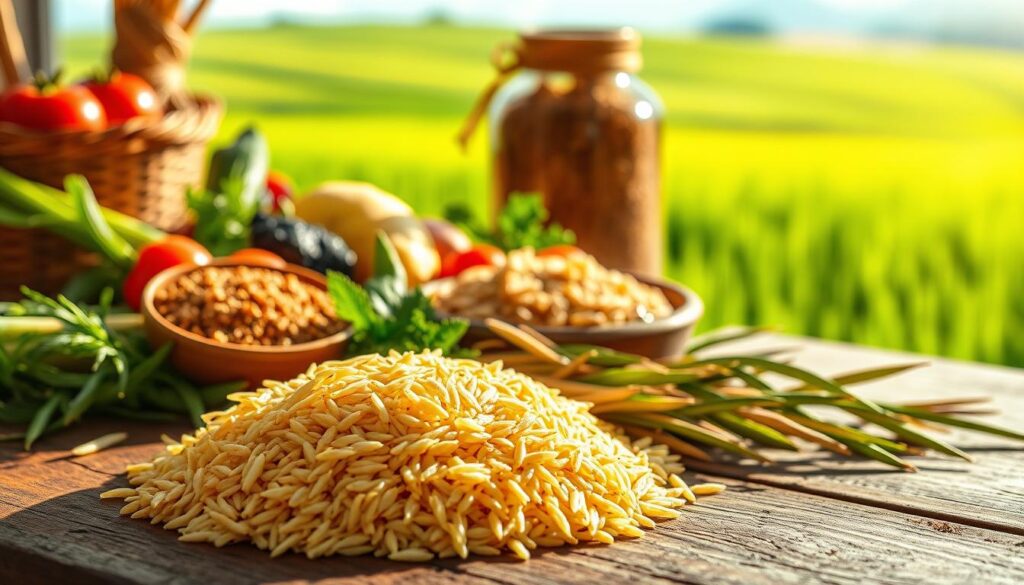
Energy Provision from Carbohydrates
Rice provides 23g of complex carbohydrates per ½ cup serving. These break down slowly, ensuring steady energy without spikes. Athletes and laborers rely on this efficient fuel source.
Glycemic impact varies by type:
| Type | Glycemic Index (GI) | Diabetes Risk |
|---|---|---|
| Brown rice | 55 (Low) | Reduced |
| White rice | 64 (Medium) | Moderate |
Essential Vitamins and Minerals
Parboiled rice retains B-vitamins, crucial for converting food into energy. A ½ cup serving also delivers:
- Magnesium (19mg): Supports muscle and nerve function.
- Phosphorus: Aids bone health and metabolism.
“Dietary fiber in rice promotes gut health and reduces cholesterol absorption.”
Digestive Health and Fiber Content
Brown rice contains 2g of fiber per serving, aiding bowel regularity. Insoluble fiber adds bulk, preventing constipation. Lysine, an amino acid, accelerates tissue repair and wound healing.
For balanced meals, pair rice with legumes or vegetables. This enhances protein quality and nutrient absorption.
Types of Rice and Their Nutritional Profiles
From fiber-rich brown rice to antioxidant-packed black rice, each type serves unique dietary needs. Processing methods determine nutrient retention, flavor, and cooking properties.
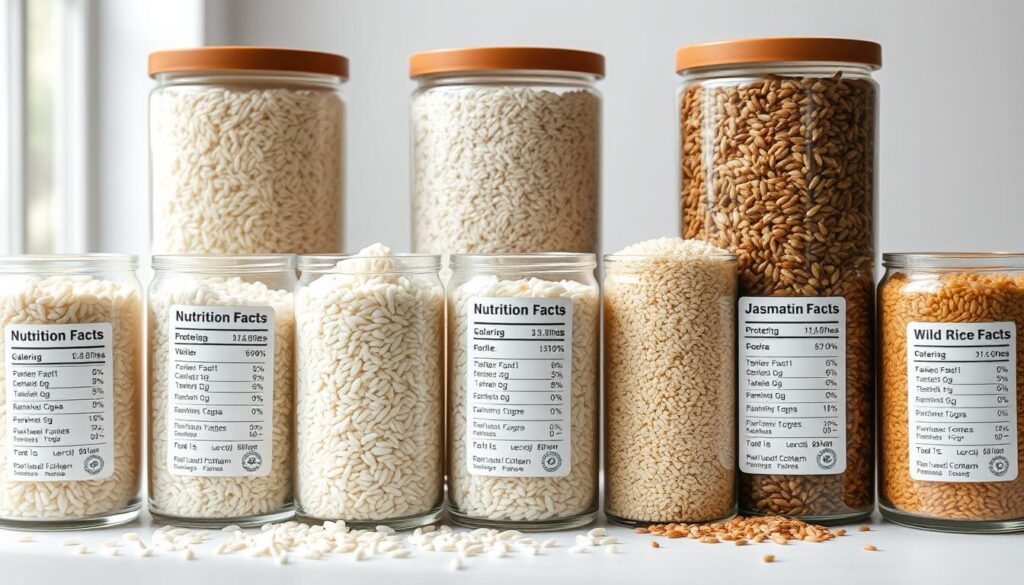
Brown Rice vs. White Rice
Brown rice retains its bran layer, delivering 3x more fiber (2g per serving) than polished white rice. The bran also houses magnesium and B-vitamins, supporting metabolism and nerve function.
Milling removes these layers, reducing white rice’s fiber to 0.6g but shortening cooking time. Its milder flavor and softer texture suit dishes like sushi or pudding.
Specialty Varieties: Black, Red, and Arborio
Black rice’s deep hue signals its anthocyanin content—30x more antioxidants than white rice. These compounds combat oxidative stress, linked to chronic diseases.
Arborio rice, high in amylopectin, creates risotto’s creamy texture. Basmati’s amylose structure keeps grains separate, ideal for pilafs.
Parboiled Rice: A Nutrient-Packed Alternative
Parboiling forces 80% of B-vitamins from the bran into the endosperm before milling. This process preserves nutrients while cutting cooking time to 25 minutes—20 minutes faster than brown rice.
“Black rice’s phenolic compounds outperform many fruits in antioxidant capacity.”
| Type | Cooking Time | Key Nutrient |
|---|---|---|
| Brown rice | 45 mins | Fiber (2g) |
| Parboiled | 25 mins | B-vitamins |
Rice and Heart Health
Rice plays a surprising role in supporting cardiovascular wellness. Studies link regular consumption to improved cholesterol levels and reduced heart disease markers. Its nutrients—like fiber and antioxidants—actively combat inflammation and arterial stiffness.
Fiber’s Impact on Cholesterol
Brown rice delivers 2g of fiber per serving, binding to LDL cholesterol in digestion. Consuming 5g daily from whole grains reduces cardiovascular risk by 9%. Ferulic acid, a compound in rice bran, relaxes blood vessels by reducing oxidative stress.
“Whole grain consumers show 30% lower stroke rates compared to refined grain eaters.”
Blood Pressure Regulation
Magnesium (19mg per serving) promotes vasodilation, easing blood pressure. Red rice offers 55mg of potassium per cup, counteracting sodium effects. Lignans in rice bran slash heart disease risk by 15–25% through anti-inflammatory action.
| Nutrient | Effect | Source |
|---|---|---|
| Fiber | Lowers LDL cholesterol | Brown rice |
| Anthocyanins | Reduces arterial plaque | Black rice |
| Potassium | Balances sodium | Red rice |
Pairing rice with leafy greens enhances these antioxidant benefits. For optimal blood pressure control, choose minimally processed varieties like brown or black rice.
Rice and Blood Sugar Management
Rice’s impact on glucose metabolism varies dramatically by processing method. Choosing the right type can stabilize blood sugar, while others may spike it. Understanding these differences helps manage diabetes risk and energy levels.

Glycemic Index Differences
Brown rice has a glycemic index (GI) of 55, compared to white rice’s 64. Low-GI foods release carbohydrates slowly, preventing sudden glucose surges. Cooling cooked rice increases resistant starch, further lowering absorption speed.
| Type | Glycemic Index | 2-Hour Glucose Spike |
|---|---|---|
| Brown rice | 55 (Low) | 110 mg/dL |
| White rice | 64 (Medium) | 140 mg/dL |
Brown Rice for Diabetes Prevention
A 2021 meta-analysis linked daily brown rice consumption to 32% lower diabetes risk. Its fiber and magnesium improve insulin sensitivity. The “Asian Paradox”—high rice intake yet variable risk—highlights the importance of variety and preparation.
“Replacing white rice with brown reduces HbA1c levels by 0.5% in prediabetic adults.”
For white rice lovers, portion control helps. Pairing it with protein or vinegar slows digestion, mimicking low-GI effects. Balance and moderation remain key for blood sugar management.
Potential Risks and How to Mitigate Them
While rice offers numerous health advantages, certain risks require awareness. Contaminants like arsenic accumulate in grains through soil and water. Proper preparation significantly reduces exposure.
Understanding Arsenic Levels
FDA testing shows brown rice averages 154 parts per billion (ppb) of inorganic arsenic—80% higher than polished white rice (92ppb). The bran layer retains more contaminants but also nutrients.
Geographic factors matter:
- Bangladesh paddies show higher contamination than California fields
- Basmati from India/Pakistan tests lowest in heavy metals
Effective Preparation Methods
The pasta cooking method cuts arsenic by 57%:
- Boil rice in 6:1 water-to-grain ratio
- Drain excess liquid after cooking
“Soaking rice 12 hours reduces phytic acid and heavy metals by 30-50%.”
| Method | Arsenic Reduction | Time |
|---|---|---|
| Pasta style | 57% | 30 mins |
| Soaking | 30-50% | 12 hrs |
For balanced risk management, limit servings to 2-3 weekly. Pair with vitamin C-rich foods to inhibit heavy metal absorption.
Incorporating Rice into a Healthy Diet
Strategic meal combinations maximize rice’s nutritional potential. When paired correctly, this grain becomes a complete protein source and fiber powerhouse. The key lies in balancing portions and preparation methods for optimal health benefits.
Smart Pairings for Balanced Nutrition
Rice and lentils achieve a perfect 1.0 PDCAAS score—matching meat’s protein quality. This combination ensures all essential amino acids are present. For variety, try these meal frameworks:
- ¼ plate rice + ½ vegetables + ¼ lean protein
- Rice-bean bowls with avocado and salsa
- Stir-fries with brown rice and mixed greens
“Cooling cooked rice overnight triples resistant starch content, improving gut health.”
Cooking Methods That Preserve Nutrients
Steaming retains 95% of rice’s nutrients compared to frying’s 60% retention. For oil-free preparation:
- Use a 1:1.5 rice-to-water ratio.
- Cook covered to prevent vitamin loss.
- Fluff with fork to separate grains.
Blending cauliflower rice cuts carbs while adding vegetables. This modification works well in fried rice recipes or sushi rolls. For traditional preparations, soaking grains reduces phytic acid by 30%.
| Method | Nutrient Retention | Time |
|---|---|---|
| Steaming | 95% | 20 mins |
| Pressure cooking | 90% | 15 mins |
These techniques make rice a versatile component in any diet. From energy bowls to chilled salads, proper preparation enhances both nutrition and flavor.
Conclusion
Modern research continues uncovering rice’s diverse health benefits. Brown rice delivers three times more fiber than polished varieties, supporting digestion and heart health. Proper preparation—like soaking or excess-water cooking—reduces arsenic exposure while preserving nutrition.
Balance is key. Pair rice with colorful vegetables and lean proteins for a complete diet. Emerging studies highlight black rice’s neuroprotective anthocyanins, adding to its profile as a functional food.
For optimal wellness, transition gradually to whole grains. Start by mixing brown with white rice, increasing ratios over time. This simple shift maximizes nutrients without sacrificing familiarity.
